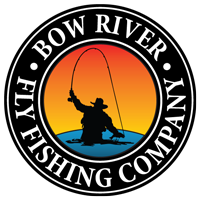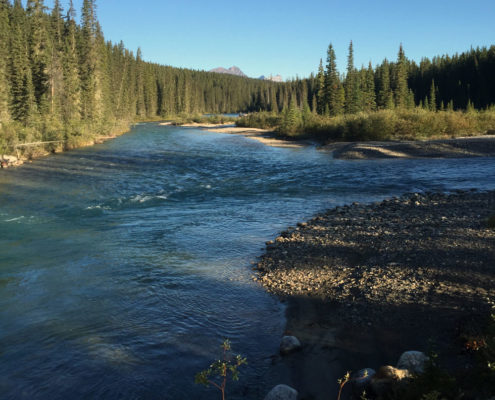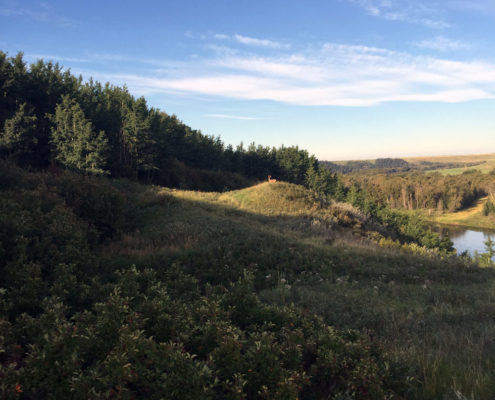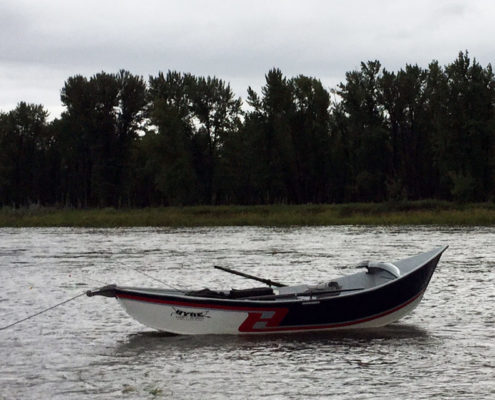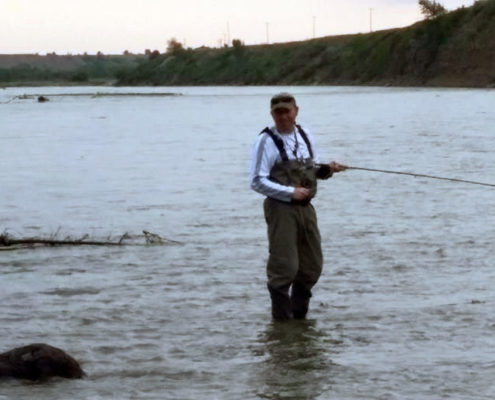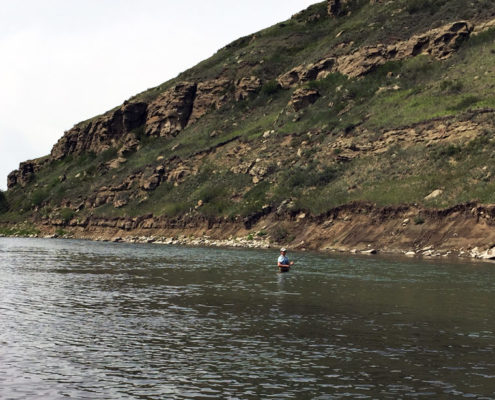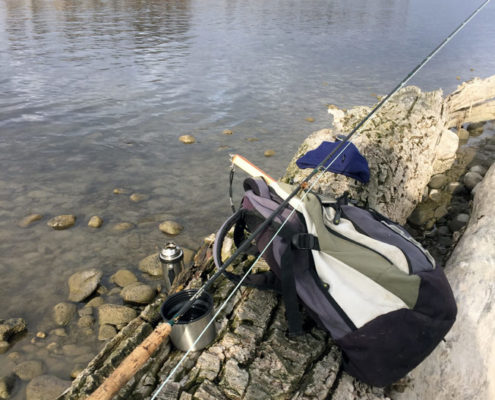The Bow River starts at Bow Glacier and follows land contours past Lake Louise, Banff and Canmore in southern Alberta. There are 11 dams on the Bow before it reaches the City of Calgary. The land area that sends water into the Bow River extends over the southern half of Banff National Park and some of the mountains and foothills east of the Park.
Best Fishing Spots on the Bow
Bow River tributaries such as the Ghost and Kananaskis rivers collect water that comes from snowmelt and rain events by way of mountain streams. The Bow River brings that water to Calgary, where it flows through the Bearspaw Reservoir. The Bow River offers some of the best fishing spots near Calgary ideal for drift boat fishing excursions.
Bow River Calgary
The Elbow River brings water from the front ranges of the mountains and the foothills to the Glenmore Reservoir. These are the two main sources of Calgary’s drinking water. People may say “we’re all downstream,” but Calgary is more upstream to other communities and habitats than most.
After the Bow River leaves Calgary, it heads south until just east of DeWinton where it turns directly east. The river then turns southeast at Bassano to Bow Island where it merges with the Oldman River to become the South Saskatchewan River.
The South Saskatchewan River travels northeast until it merges with the Red Deer River, then merges with the North Saskatchewan River (flowing southeast through Edmonton) east of Prince Albert, Saskatchewan.
Eventually, all that water travels through Lake Winnipeg to flow into Hudson Bay via the Nelson River. This is why some people call Alberta’s Eastern Slopes “Western Canada’s Headwaters.”
To learn more about Bow River’s Flow rate and view it on Google maps, visit our Resources page.
Interested in a guided fly fishing trip? Book Today or read more about our experienced Fly Fishing Guides.
